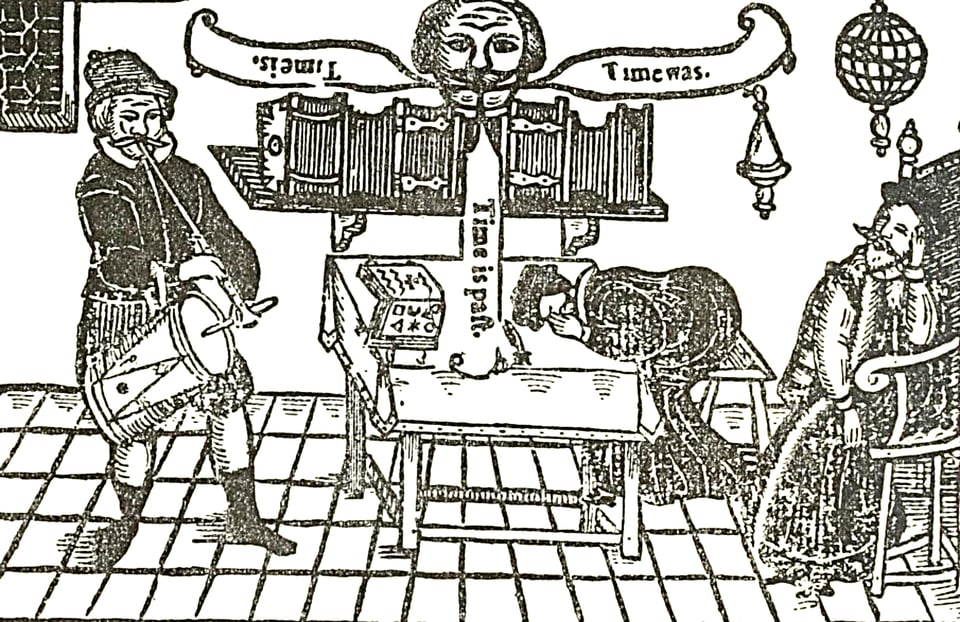Is AI an apocalypse?
Against technological inevitability

As I’ve made the Apocalypse rounds this year, many people have asked me if we’re on the brink of an AI apocalypse. My short answer is “no.” My medium answer is “not in the way you’re thinking.” This is my attempt to work out a long answer.
The dominant narrative about AI in 2025 isn’t extinction, replacement, transcendence, or even innovation, although each of those themes has had its moment over the past three years and surely will again. The dominant narrative about AI in 2025 is inevitability. People who care to know are well aware that the current state of AI-generated “work” compares poorly to what humans can do outside of all but the most narrow and rigid tasks of pattern recognition. They also know that rendering it acceptable to the public requires the oversight and intervention of humans, often many of them. (See: That Coke ad.) But according to the narrative of inevitability, it doesn’t matter what AI (or more specifically, Large Language Models) can or can’t do right now. All that matters is that they will inevitably improve, and those improvements will inevitably result in products that can rival or best human work, and that human work will inevitably become obsolete. So let’s get ahead of the game and start firing people now.
The narrative of technological inevitability relies on a society-wide conflation of efficiency with value, a profound denial of and disinterest in human agency, and, most relevant to The Antiquarian’s concerns, the shallowest possible grasp of history. The Industrial Revolution—or at least, an understanding of the Industrial Revolution on par with (or worse than) whatever ChatGPT might spit out ten minutes before class—has been weaponized especially effectively here. (For a fuller picture of that period, and how it relates to ours, see Blood in the Machine by Brian Merchant.) But there’s an even more insidious myth about technological inevitability and its capacity for destruction lurking deeper in the past: The supposed superiority of European technology at the time of contact with the Americas.
We all know the story: Europeans had guns and steel on their side, and their advanced weaponry overwhelmed Indigenous societies that were still using stone tools. After a swift invasion by European people and their technologies, the surviving Indigenous people immediately adopted the obviously superior foreign tools, goods, and materials. Indigenous technologies had so little to offer that Europeans never bothered with them.
In his article “Narratives of Conquest, Colonialism, and Cutting-Edge Technology,” archaeologist Enrique Rodríguez-Alegría calls the supposed superiority and fast spread of European technology in the Americas “the model of quick replacement.” This model been so prevalent in archaeology that the presence or absence European artifacts is often used to date sites. Did you find European stuff? Obviously after contact. No European stuff? Must be before contact. But in eastern North America, new radiocarbon dating shows that sites with no European goods were frequently occupied long after contact with explorers and colonists. The people who lived in them just weren’t interested in European technology, and it hadn’t yet been forced upon them. There was nothing preordained about its superiority, and nothing inevitable about its adoption.
In Xaltocan, a town north of Mexico City where Rodríguez-Alegría works, the story is even more counterintuitive.1 For most of its history, the people of Xaltocan made their own obsidian tools, which archaeologists know because they find chipped-stone debris, spent obsidian cores, and other byproducts of their production. In 1428, the Triple Alliance conquered Xaltocan, bringing it into the Aztec empire. The Triple Alliance controlled certain obsidian outcrops, and they forced their subjects to buy already manufactured blades and other tools in the empire’s extensive markets. Cut off from their access to the necessary raw material, the people of Xaltocan stopped making their own tools.
So you might think that after the Spanish conquest in 1521, Xaltocan and towns like it would have quickly become dependent on European tools. It had been nearly a century since most people in Xaltocan had regularly chipped their own blades; perhaps few had learned how to do it, or maybe they were now accustomed to the convenience of a market economy. And yet, after the Spanish conquest, the people of Xaltocan didn’t adopt European-style metal blades. Instead, they started making obsidian tools again. With the Aztec empire out of the way and the Spanish one not much interested in controlling the flow of obsidian, the craft experienced a revival in Xaltocan that lasted decades or even centuries.
Would a person in 16th century Xaltocan have preferred a metal knife? Maybe. But maybe not. Metal knives were expensive, difficult to repair, and required permission from colonial authorities to carry. Obsidian was abundant in the volcanic landscape of central Mexico, and blades could be easily repaired or replaced. Plus, they were beautiful and extremely functional; obsidian blades are far sharper than steel ones even today. European colonists in Mexico agreed. Although their new laws and regulations ensured metal knifes and swords an important role as status symbols, many of them preferred obsidian for private uses, like shaving.
There are countless more examples of just how un-inevitable the adoption of European technology was, from all over the Americas. And more are coming to light as archaeologists, like those working in eastern North America, realize they should be looking for them. And yet, the model (I might call it “the myth”) of quick replacement” survives, “fed by Eurocentric biases and modern beliefs on the inevitability of technological progress,” Rodríguez-Alegría writes. The myth of quick replacement justifies the narrative of technological inevitability, which supports the myth of quick replacement, and on and on and on, until the real stories are reduced to exceptions or rendered entirely invisible by modern expectations. So when those in power trot out the narrative of technological inevitability to force AI into our work, minds, and lives, we don’t necessarily realize it’s not true, and never has been.
What happened in the past was never inevitable, and the future isn’t either. The myth that it is, however, carries far more danger than any new technology, including AI. For the myth to survive, any effort by people with less power to resist, question, repair, persevere, or reject must be suppressed and then purposely forgotten. The past, present, and future must be bent into the shape of the myth. And that could do real damage, perhaps apocalyptic damage, to who we know ourselves to be, and what we believe is possible.
All details come from “Narratives of Conquest, Colonialism, and Cutting-Edge Technology, American Anthropologist, March 2008. Rodríguez-Alegría also wrote about Xaltocan and obsidian in The Archaeology and History of Colonial Central Mexico: Mixing Epistemologies, Cambridge University Press, 2016. ↩

